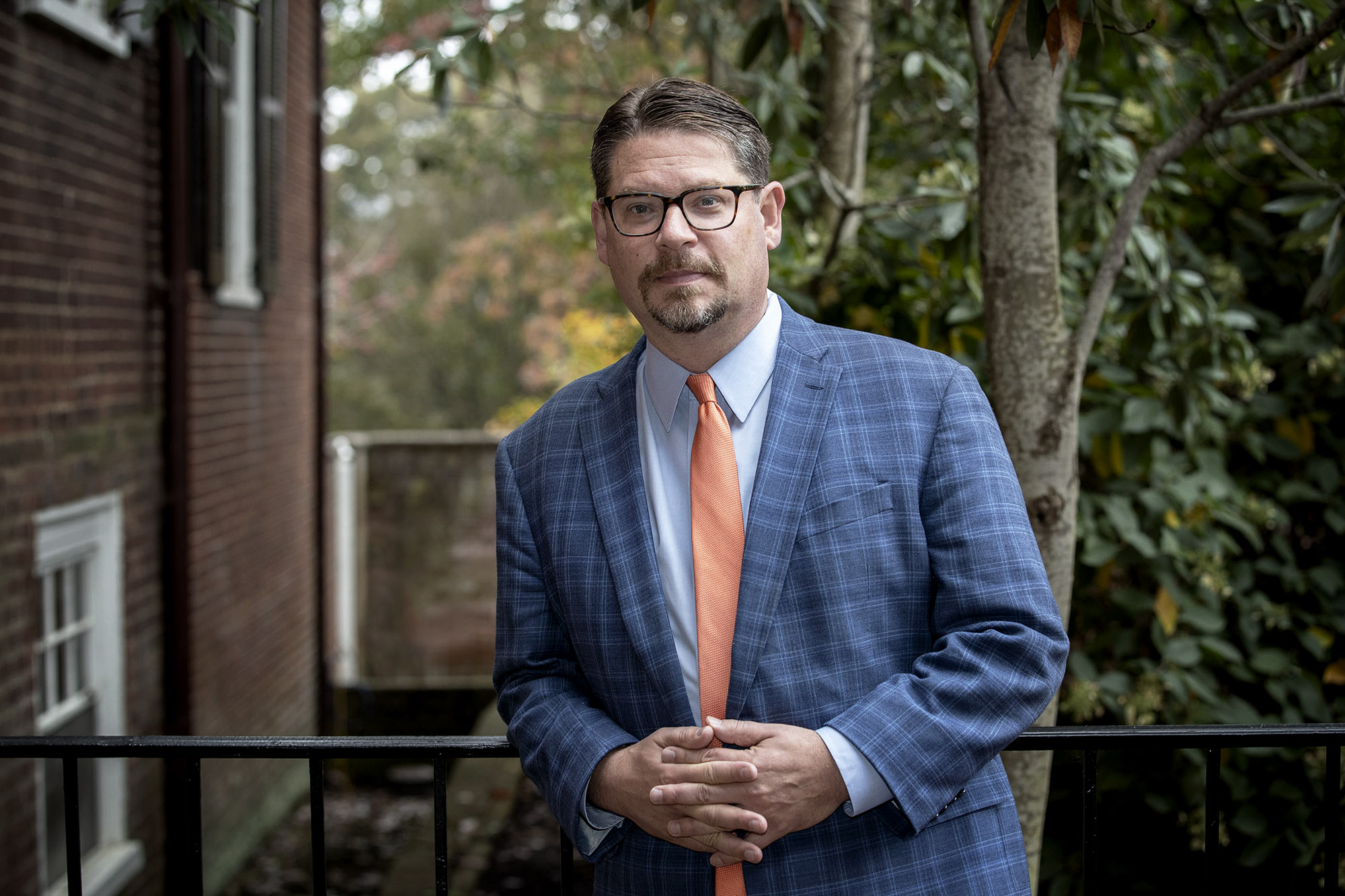When it comes to divorce in 2020, don’t believe everything you read.
Headlines in newspapers across the country implying that the pandemic has led to a rise in divorces are erroneous, according to University of Virginia sociology professor Brad Wilcox.
In a recent article for the Washington Post, Wilcox wrote that divorce is actually on the decline in 2020.
Wilcox, the director of the National Marriage Project at UVA – who is writing a new book on marriage, entitled “We Before Me” – believes the pandemic has given many people a new appreciation for how much they depend upon their spouses.
UVA Today caught up with Wilcox to learn more.
Q. In your op-ed for the Post, you wrote that many media reports – including a piece in the New York Times – suggest that the number of divorces during the pandemic is on the rise when, in actuality, divorces appear to be on the decline in 2020. How do you explain this incongruity? And what do the most recent statistics tell us?
A. Well, there is no question that many married couples have struggled in COVID time, what with job losses, unexpected home schooling, lockdown malaise, the death of loved ones, and so many other small and large traumas. The surveys suggest that about one-third of couples have faced traumatic stress in their marriage this year, which is a lot!

Sociology professor Brad Wilcox sees similarities in divorce rates between now and the Great Recession. (Photo by Dan Addison, University Communications)
So it’s not a surprise that many writers and journalists have speculated that divorce is surging in COVID time. But, at least for now, the data that we have from four out of five states reporting divorce in real time – Arizona, Florida, Missouri, Rhode Island and Oregon – indicate that divorce has fallen. No doubt, some of this decline can be attributed to the fact that some couples had difficulty getting divorces amidst the lockdowns. But I also think the pandemic is making plenty of couples develop a new appreciation for their spouse and the merits of staying married.
Q. How and why do you think this has manifested?
A. As I wrote in the Washington Post with my colleague Lyman Stone: “Tough and traumatic times can change our priorities, our perspective and our devotion to friends and family for the better. When we face trials with a strong social network, the right perspective or a deep faith – as [former UVA psychology professor] Jonathan Haidt notes in “The Happiness Hypothesis” – adversity is more likely to lead to growth, strength, joy and self-improvement rather than the opposite.”
In particular, COVID time has made plenty of us develop a new appreciation for how much we depend upon our spouse – to help care for older parents, tutor the kids, run to the grocery store, bring in a paycheck, or lend a listening ear when we’re at our wits’ end. In fact, a majority of husbands and wives report COVID has made them appreciate their spouses more. So, for many, the COVID crucible seems to have made their marriages stronger.
Q. It would seem like an oversimplification to say, “COVID caused my divorce.” For some people, COVID may have been the proverbial straw that broke the camel’s back as it pertains to divorce, while for others it may have brought them close together and prevented a divorce. Generally speaking, in non-pandemic times, what are some main sociological factors at play when it comes to divorcing or choosing to stay together?
A. In speaking to people who have struggled this year, it is clear that many had underlying issues in their marriages heading into the pandemic. As one man in Texas told me: “My marriage had preexisting conditions, and COVID killed it.”
More generally, financial stress, unemployment – especially on the part of the husband –infidelity, substance abuse, emotional unavailability, unhappiness over the division of housework/child care, a kind of “me-first” mentality, and the expectation that marriage will make you happy all or most of the time (what I call “The Soulmate Myth”) all increase your odds of divorce.

By contrast, stable employment, a spirit of marital generosity, men who invest on the domestic front, a shared religious faith, and a strong sense of marital teamwork are all factors that increase your odds of being stably married. “We Before Me” is the idea here. I tell my students to apply [UVA basketball head coach] Tony Bennett’s “Five Pillars” to their own future marriages to cultivate this kind of marital teamwork: servanthood, thankfulness, humility, passion, unity.
In more sociological terms, a strong economic foundation, a strong normative commitment to the institution of marriage, and decent relationship skills all provide key ingredients for a stable marriage today.
Q. Could some of the data pertaining to divorces being on the decline simply be a result of quarantining – people just waiting until after the pandemic is over?
A. Yes, I think the lockdowns have inhibited divorces for some couples. So I predict an uptick in 2021 divorces. But, then, like we saw in the last Great Recession, a decline in the divorce rate.
You know, the divorce rate has fallen by 20% since the Great Recession, in part, I think, because people have become more cautious about leaving their marriage in a world that seems increasingly insecure. I think the propensity to see marriage as safe harbor in tumultuous times will only increase – for those who tie the knot or are already married.
Q. How do the number of divorces this year compare to other tumultuous times in our country’s history, and do you have any predictions for how these numbers might wind up shaking out in the aftermath of the pandemic?
A. Divorce also fell during the Great Depression. So as long as times remain tough, I’d expect the divorce rate will come down (with the possible exception of 2021). But at some point, of course, the divorce rate will spike, perhaps in a moment when people are feeling much more relaxed about the economy and country. That’s what happened in the late 1940s.
Q. Anything else about this topic you’d like to add?
A. The news about marriage in the time of COVID is by no means all good, of course. The pandemic has wreaked havoc on our economy and our ability to meet new people. So, I’d also predict that the marriage rate, which is already at a historic low, will go lower still. And the marriage rate will fall most for poor and working-class Americans hit hardest by COVID. That’s the bad news.
Q. Can you tell us a little bit about the new book that you’re working on and what inspired it?
A. There’s a lot of bad news about marriage out there today. But it’s not all bad news. What many Americans don’t know is that today your divorce risk is well below one-in-two when it comes to your own marriage’s risk of ending in divorce. And that the share of kids being raised in stable, two-parent families is ticking up. And that there are plenty of couples doing well, or well enough, at marriage.
My book will spotlight precisely those couples who are succeeding at forging strong and stable marriages in America today. We often hear that it is the educated and affluent who are most likely to succeed at marriage today, and there is a lot of truth to that. But there are plenty of couples who aren’t affluent who are doing well, too. You know, it’s not just money, it is also things like your values and your network of friends and family that also loom large in determining who succeeds at marriage today. It’s no accident, for instance, that Indian Americans have some of the lowest rates of divorce in this country; they hail from a culture that puts a premium on family stability. “We Before Me” will explain how both money and mores matter in today’s marriages.
Media Contact
Article Information
October 27, 2020
/content/qa-professor-sets-record-straight-2020-divorce-rate

